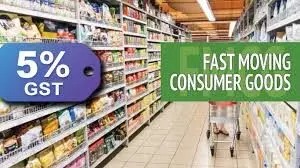Did GST 2.0 really help consumers? Here is the reality check
Consumers begin to see GST rate cut relief at grocery stores, online platforms: Survey
By - Anoushka Caroline Williams |
Hyderabad: Consumers are beginning to see some of the promised benefits of reduced GST rates. However, not all sectors are keeping pace with GST 2.0.
According to a new LocalCircles survey covering over 74,000 respondents across 341 districts, the pass-through of GST rate cuts to consumers has shown “sizeable improvement” in packaged foods and medicines. However, appliances and vehicles have witnessed a decline in benefit transmission compared to Week 1.
Food and Medicine Show Improvement
The GST 2.0 overhaul, effective September 22, 2025, simplified rates into a two-tier structure of 5% and 18%, with luxury and sin goods taxed at 40%. Two weeks later, 40% of consumers surveyed confirmed receiving the full benefit of GST reduction on packaged foods, while 18% reported partial benefits.
This marks an 80% overall improvement in benefit transmission and a 300% jump in full benefits compared to the first week.
“Consumers are beginning to see relief at grocery stores and online platforms, especially on packaged food staples,” said Rohit Kumar, Senior Research Lead at LocalCircles. “However, the pace remains uneven, largely depending on how quickly brands update their MRPs and how retailers adjust pricing.”
Medicines have also seen progress. 16% of respondents said they received the full GST benefit, and 44% received a partial benefit, showing a 76% increase in consumers gaining some advantage from the tax cut. Essential and life-saving drugs, now taxed at 0%, are a key driver of this change.
“The impact on healthcare expenses is starting to show,” noted Dr. Nivedita Sharma, a public health policy analyst. “But many chemists are still selling old stock at pre-reduction MRPs, which delays the consumer-level benefit.”
Electronics and Appliances See Decline
While the festive season has boosted appliance sales, the GST benefit has not translated equally. The survey found that only 23% of consumers received the full benefit of tax reduction on appliances, white goods, and consumer electronics, while 34% received a partial benefit.
This represents a 15% drop from the previous week, and a 10% decrease in those reporting full benefits. Experts attribute this to opaque pricing and retailer hesitation.
“Retailers are wary of cutting prices unless manufacturers compensate them for the GST difference,” said Kunal Bhatia, a retail market expert. “As a result, consumers often end up paying near-old prices despite tax reductions.”
Vehicles Lose Momentum
Despite a brief surge in auto sales following GST 2.0, the second week showed a downturn. 55% of consumers confirmed receiving the full benefit of reduced GST on vehicles, and 21% received a partial benefit. However, this marks a 24% drop overall in benefit transmission, with a 20% fall in those who received the full cut.
LocalCircles notes that some dealers are offering freebies instead of price reductions, which may explain the weaker pass-through.
“Automobile pricing transparency remains an issue,” said Rajeev Singh, an independent tax consultant. “Consumers may feel they’re getting a deal through add-ons, but the GST reduction should ideally reflect as a direct price cut.”
Persistent Gaps and Market Examples
The survey highlights continued examples of non-compliance in both online and offline markets. For instance, Zepto was still listing Colgate MaxFresh toothpaste at the old MRP of ₹172 despite the manufacturer reducing it to ₹153. Similarly, an offline medicine retailer was found charging ₹519.70 for a drug that should have been priced around ₹483 after GST revision.
“This shows why government oversight remains essential,” said Kumar. “Retailers often continue billing at old MRPs until fresh inventory arrives or manufacturers provide price adjustment incentives.”
Government Urged to Act
LocalCircles has announced that the findings will be shared with the government to urge stronger enforcement and ensure benefits reach consumers faster.
“It is clear that the government needs to more proactively engage with FMCG and pharma companies to ensure retailers are incentivised to pass on the rate cuts immediately,” the report concludes.
Survey Snapshot
• Responses: 74,000+
• Geographic Spread: 341 districts across India
• Gender: 64% men, 36% women
• Urban-Rural Split: 41% Tier 1, 29% Tier 2, 30% Tier 3–rural
• Platform: Conducted via LocalCircles, India’s leading community-based governance platform